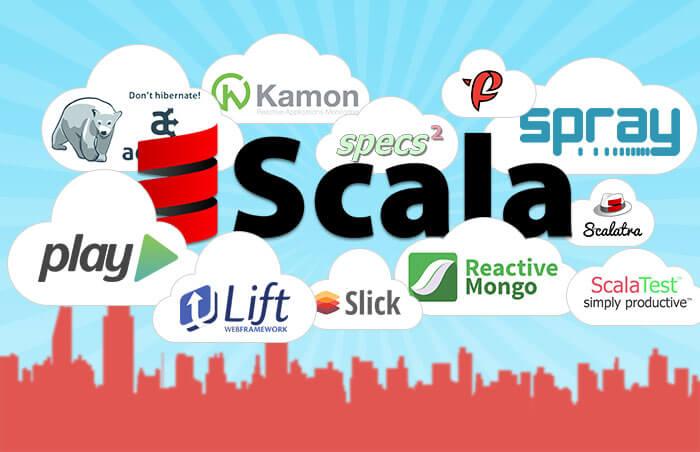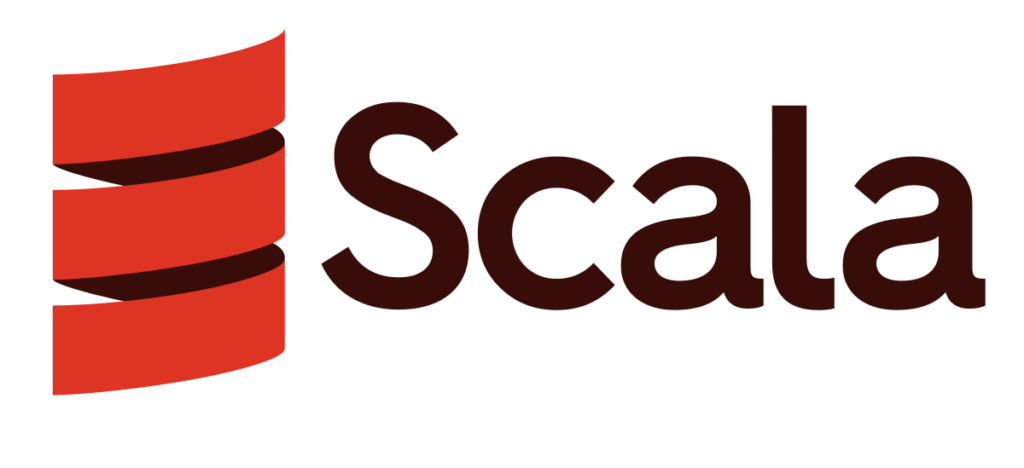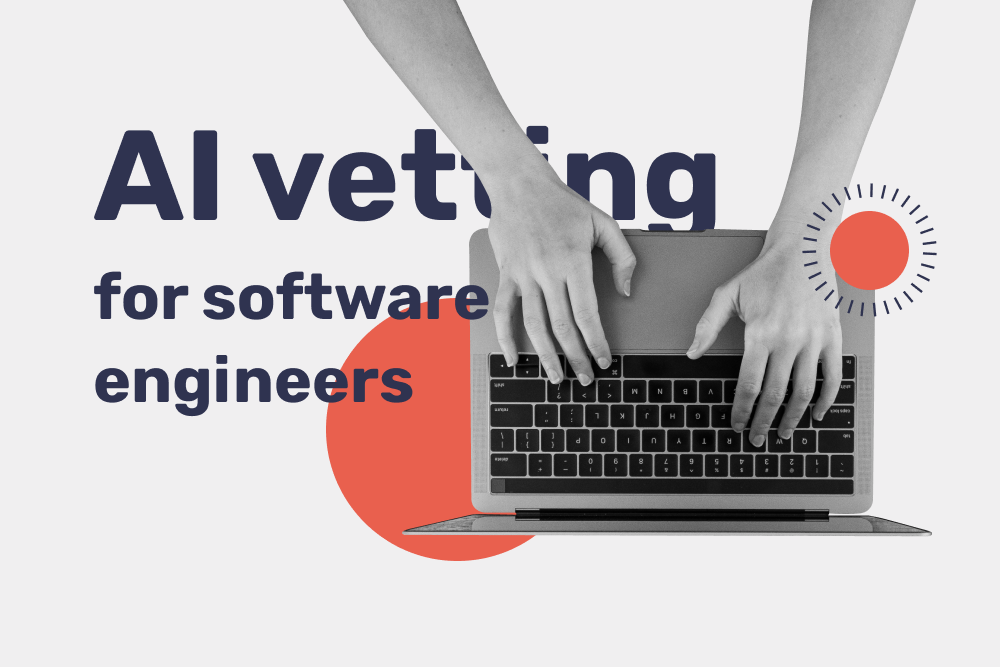According to statistics, Scala developers are one of the most sought-after professionals in the tech market. The fight for Scala talent is fierce – however, it doesn’t mean you have to settle for unskilled professionals. To make sure you get a talented programmer to join your team, take your time to plan out an efficient job interview. In this post, we will share 30 Scala developer interview questions and answers business owners can ask junior, intermediate, and advanced Scala developers.
15 Junior Scala Developer Interview Questions
When hiring a junior scala developer, you want to make sure that a candidate you’re interviewing has a clear understanding of the basics of the language – its use cases and syntax. It’s preferable for an entry-level developer to have at least a superficial understanding of Scala frameworks.
To test the skills of a prospective Scala developer, ask these questions at a job interview.
1. What frameworks does Scala support?
Here are a few supported frameworks a Scala jobs interview candidate can mention:
- Spark
- Akka
- Scalding
- Bowler
- Lift
- Neo4j.

2. What is a Stream in Scala?
By definition, Stream is a Lazy list that evaluates its elements only when requested. Using Lazy lists helps developers save resources and optimize the performance of the final build.
3. Please, define Scala operators and state the types of operators.
Overall, the programming definition of an operator is that of a symbol representing an operation.
The Scala language expresses operators as methods. Here are the types of Scala operators:
- Relational operators
- Logical operators
- Bitwise operators
- Assignment operators
- Arithmetic operators.
4. How are Tuples used in Scala?
Tuples allow developers to combine a finite list of numbers so that it can be handled as a Whole. The key characteristics of a tuple that set it apart from arrays or lists are its immutability and the support of different data types.
5. What is the difference between a Scala class and an object?
Where’s class is a combination of data and associated instances, an object is every single instance of a class.
6. What is a Recursion Tail in Scala?
Recursion is a function that can call itself autonomously. On the contrary, the most common mechanism in programming is A call B, B calls C, etc. Since recursions are independent and don’t call other functions, they are typically the final functions in the code.
7. How does using Scala benefit projects?
The chief advantage a developer candidate should mention is the language’s scalability (as the name suggests). However, there are many more benefits a programmer can elaborate on, such as:
- Ease of testing
- Object-oriented nature
- Good fit for functional programming
- Ease of maintenance
- Tight fit for concurrent programming
- Support for native tuples
- Clean code
- Absence of boilerplate code.
8. What are Scala companion objects? Name some of their benefits?
Companion objects are those that share the name and the source file of the parent class.
Here are the main benefits of declaring companion objects:
- Allows developers to skip attaching keywords to object, helping keep the Scala code as concise as possible.
- Companion objects facilitate encapsulation and are considered one of the best practices of functional programming.
- Companion objects are a straightforward way to separate static and dynamic methods since the contents of a companion object aren’t included in the runtime.
9. Describe the difference between Val and var in Scala
Although both are keywords that help developers define variables, they operate differently.
- Var in Scala is used for straightforward variable declaration, with the process similar to Java.
- Val, on the other hand, helps declare immutable variables.
10. How is concurrency different from parallelism?
Confusing concurrency and parallelism is a common trap inexperienced developers fall into.
To start with, a candidate should clarify the definitions of both concepts.
Concurrency is a condition when more than a single task is running during overlapping intervals.
Parallelism is a state in which tasks are completed simultaneously with multiple CPUs activated at once.
Consequently, the main difference between the two is that, for concurrency, only one task uses the processor, whereas, in parallelism, multiple units work at once. Other than that, the applications that implement parallelism are considered much easier to debug than concurrent apps.
11. What are Scala traits?
In Scala, a Trait is a subtype of a class that supports extensions and multiple inheritances.
When using Traits, developers need to remember that a single trait can only extend one class at a time. On the other hand, a class can have multiple traits assigned to it. Also, it’s worth noting that there’s no way to instantiate a Scala trait.
12. Define Scala case classes
Case classes share most features with standard classes. However, they possess special properties as well:
- A developer needs to add a special modifier when declaring the case
- Case class constructor parameters can be handled as public values and have open access.
- Case classes generate methods automatically based on a predefined parameter list.
13. Define Scala sets.
In Scala, a set is a collection of unique items (two instances can’t repeat within the same set). All sets fall into two categories – mutable and immutable ones. By default, a programmer cannot modify a set.
Developers can manipulate Sets using methods like isEmpty, head, or tail.
14. What types of literals does Scala support?
Scala developers use the following types of literals:
- Booleans: true/false statements
- Integers: 1, 2, 3, 4, 0,25 etc. .
- Floating points
- Symbols
- Strings: character sequences (“Hello, World”.
- Characters: “a”, “b”.
15. Describe Scala BitSets.
In Scala, a BitSet is a series of integers treated as a single integer. To add a new item to a BitSet, developers use the “++” operator. Similar to regular Sets, a BitSet can be either mutable or immutable.
To find out which general questions a talent manager can ask a job candidate, take a look at our rundown on top software developer interview questions.

10 Intermediate Scala Developer Interview Questions
Intermediate developers should be able to explain the elements of syntax in-depth, choose between the most efficient one among several ways to complete the same operation, and have an understanding of how to use the features of the language to benefit the project.
Test the competencies of an intermediate Scala programmer with these technical questions.
1. What scopes does a Scala Variable have?
All Scala variables fall into one of three scopes – fields, local variables, and method parameters.
A candidate should be able to elaborate on the unique characteristics of each scope, as follows:
- Fields are publicly accessible variables declared within a single object. A programmer can declare a field using var and val.
- Methods parameters are immutable variables used to assign values to methods. To access a parameter without entering a method, developers use Reference.
- Local variables are only accessible inside the method where they are declared.
2. Define Monads in Scala
A Monad is an object that supports wrapping a different object. Monads allow developers to manipulate objects without modifying them directly. By running a data manipulation on a monad, a programmer will consequently modify a wrapped object as well.
3. Why is immutability Scala’s default feature?
Although handling immutable sets and methods is at times inconvenient for developers, the inability to modify instances facilitates concurrency and improves the security of a Scala application.
4. What types of identifiers does Scala have?
An identifier is a name attached to an object, class, or method, used to tell it apart from others. The language doesn’t allow passing keywords for identifiers. Other than that, when working on Scala programming, a developer should keep in mind that Scala identifiers are case-sensitive.
The programming language supports four types of identifiers:
- Operator identifiers
- Alphanumeric identifiers
- Literal identifiers
- Mixed identifiers.
5. Describe the process of Scala code compilation
Here are the stages of code compilation in Scala:
- A developer writes the application in a Scala IDE or REPL.
- The code is later converted into byte code to facilitate compilation.
- Scala code is sent and compiled in the Java Virtual Machine (JVM).
6. How are Nil, None, Nothing, and Null different?
Although all four have a similar function, the behaviors are notably different:
- Null is returned when there’s no value associated with the operation.
- None is a return for a Scala option that has no assigned value.
- Nil is a statement that gets returned at the end of a list.
- Nothing – the lowest among all System types.
7. Define Scala loops. What types of loops are there?
A loop is a structure that allows applications to execute repetitive actions (sometimes limited to a specific number of runs). Here are the types of Scala loops:
- Break – this Loop type is used to terminate a loop of a different type and continue executing the actions following the loop.
- For – a loop that executes a repeated operation a set number of times.
- While is a loop that auto-executes as long as a system complies with a pre-set condition. Before each execution, a while loop runs a check to ensure condition compliance.
- Do-While – a type of Scala loop that tests the compliance with a pre-set condition at the end of executing the action.
8. What are the types of Scala modifiers?
There are three primary types of modifiers in Scala:
- Private: an object can only be accessed within a class where it has been declared.
- Restricted: a developer can access an object from the subclass of the class where it’s created.
- Developers can access public code members from anywhere in the code, with no need for external modifiers.
9. What are Scala anonymous functions?
In Scala, an anonymous function is also known as a function literal. During code runtime, an anonymous function translates into function values. It’s worth noting that Scala offers one of the easiest syntaxes for managing anonymous functions.
10. What are the main differences between Scala and Java?
A developer interview candidate should remark that two languages are similar – they have a lot of syntax in common and share the OOP nature. However, there are a few crucial differences between Scala and Java:
- Unlike in Java, in Scala, closures are supported.
- All Scala instances are seen as objects (not the case for Java).
- Scala supports DSL (domain-specific language).
- There’s no Traits feature in Java.
- Scala programming language supports concurrent programming.
5 Advanced Scala Developer Interview Questions
Finally, an advanced developer should understand the drawbacks of the language as well as its benefits and have a solid grasp of Scala frameworks. Ideally, you want to find a developer with a knack for teaching and explaining since this programmer will mentor all the juniors at the office.
To see the depth of Scala understanding in a candidate you are working with, add these Scala developer interview questions to your list.
1. What are Scala Extractors?
Extractors are objects a developer can attach to the unapply method. The purpose of this method is to break a value down into its components.
2. Define Auxiliary constructors
Auxiliary constructors define methods of the “this” class. There are two things developers should keep in mind when handling an auxiliary constructor:
- It’s crucial to assign a different signature to each constructor.
- Each auxiliary constructor calls an existing constructor (meaning that a programmer needs to declare at least one constructor before declaring an auxiliary).
3. What is Either/Left/Right in Scala?
Either is a Scala abstract class that represents two data types.
Syntax: Either [A, B].
If Either references the subtype A, the parameter is Left. Similarly, when the class represents B, it’s Right.
4. What is an Option in Scala?
Answer: Option is a Scala class that represents optional values (both existent and non-existent ones). There are two Option subclasses:
- Some – for existing values
- None – for non-existing values.
The combination of Option and its subclasses makes an Option/Some/None design pattern.
5. Which Scala frameworks do you use to develop RESTful applications?
A candidate should name a few most common Scala frameworks that support REST:
- Spray – supports REST API using the Actor model.
- Scalatra – one of the easiest-to-use Scala frameworks for developing RESTful apps.
- Lift – supports routing with the help of pattern matching.
Find out how Bridge helps business owners hire Scala developers abroad.
Conclusion
Understanding the benefits, applications, and syntax components of Scala is crucial for being able to create fully-functional applications. That’s why talent managers and business owners have to ask developers a couple of technical Scala developer interview questions to see how well job candidates understand and explain the terminology and concepts behind Scala.
Hiring a Scala developer isn’t easy since the language isn’t as widespread as Java, Python, or C. To build an affordable team of Scala developers, start exploring overseas markets. Take a look at how much you can save on the Scala developer salary alone by using our up-to-date budget calculator. To get professional assistance in talent sourcing and team management in Ukraine, Mexico, or Argentina, hire a team of talent, legal, and office management experts at Bridge.
Find out how we help business owners scale their projects abroad and assist in hiring Scala developers!



